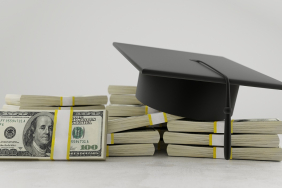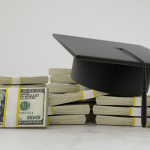In 2025, navigating the complex landscape of student loan forgiveness and student loan repayment options has never been more crucial for borrowers like you. With various programs and proposals on the table, understanding how to effectively manage your student debt can significantly impact your financial future. As the U.S. Department of Education rolls out updates on student loan forgiveness 2025, you’ll need to be informed about the available strategies, including income-driven repayment plans and the benefits of public service loan forgiveness. This guide will equip you with the knowledge to make empowered decisions and successfully steer your financial path forward.
Current Student Loan Forgiveness Programs and Proposals for 2025
As 2025 approaches, understanding the latest student loan forgiveness 2025 opportunities is crucial for managing your finances effectively. The U.S. Department of Education has unveiled several initiatives aimed at easing the burden of student loan repayment for borrowers, especially those who qualify as low- to middle-income earners or public service workers.
Key Forgiveness Opportunities
| Program | Eligibility Criteria | Forgiveness Amount |
|---|---|---|
| Income-Driven Repayment (IDR) | Must meet income qualifications and complete 20-25 years of payments. | Varies based on remaining loan balance. |
| Public Service Loan Forgiveness (PSLF) | Must work full-time for an eligible non-profit or government organization and make 120 qualifying payments. | 100% of the remaining balance. |
| SAVE Plan | Applicable to all borrowers enrolled in income-driven repayment plans. | Varies; typically benefits are observed after 10 years for undergrad loans. |
The student loan forgiveness 2025 program is especially tailored for those facing financial hardships and is designed to support sustainable repayment options. You might also find student loan repayment strategies that maximize benefits such as reductions in deferred payments during economic challenges or specific criteria for qualifying payments.
It’s important to keep an eye on these programs and to apply before June 30, 2025, to take full advantage of any potential relief from your obligations. Always double-check your eligibility for these options to effectively manage student debt and continue moving forward financially.

When it comes to managing your student debt, understanding your repayment options is crucial. Here are some effective strategies to help you succeed:
| Strategy | Detail |
|---|---|
| Explore Income-Driven Repayment | Programs like Income-Based Repayment (IBR) or Pay As You Earn (PAYE) can adjust your monthly payment based on your income. This helps make your payments manageable while also paving the way for potential student loan forgiveness 2025 after 20-25 years of qualifying payments. |
| Consider Refinancing | If you have a stable income and good credit, think about refinancing your student loans. This could lower your interest rate and monthly payment, giving you more room in your budget to manage student debt effectively. |
| Public Service Loan Forgiveness | If you work in public service, your loans may qualify for the PSLF program. After 120 qualifying payments, the remaining balance can be forgiven, providing significant financial relief. |
| Keep Updated with Changes | Stay informed about legislative changes that may affect your repayment options, including those proposed by lawmakers for student loan repayment plans, to ensure you’re always maximizing your relief opportunities. |
By leveraging these strategies, you can set yourself up for successful student loan repayment and pave the way toward a debt-free future. Be proactive and informed to make the most of the available options!
Frequently Asked Questions
What are the current options for student loan forgiveness in 2025?
In 2025, there are several student loan forgiveness options available for borrowers. A significant program is the Public Service Loan Forgiveness (PSLF), which allows individuals working full-time for a government or nonprofit organization to qualify for forgiveness after making 120 qualifying monthly payments. Additionally, Income-Driven Repayment (IDR) plans enable borrowers to have their remaining federal student loans forgiven after 20 to 25 years of qualifying payments, with specific criteria applicable to different IDR plans. The upcoming application period for student loan forgiveness under various programs emphasizes making 2025 a crucial year for borrowers seeking relief.
How do I apply for student loan forgiveness by the June 30 deadline?
To apply for student loan forgiveness before the June 30, 2025 deadline, you should first log in to the Federal Student Aid (FSA) website using your FSA ID. After logging in, navigate to the ‘Manage Loans’ section and select the loan forgiveness option. From there, choose the appropriate forgiveness program, such as IDR adjustment or PSLF. Complete the online application, upload any required supporting documents, and submit your application promptly. It’s advisable to apply early to mitigate any potential technical issues that might arise as the deadline approaches.
What changes are proposed by the Republican student loan bill?
The Republican student loan bill proposes several significant changes to the federal student loan system, which could affect how borrowers manage their debt. Notably, the legislation aims to eliminate many current repayment plans, reducing options to just a standard repayment plan and the newly proposed Repayment Assistance Plan (RAP). It extends repayment periods for some borrowers, leading to potential longer timelines before loans are forgiven, potentially up to 30 years for certain plans. Additionally, the bill seeks to remove deferment options based on economic hardship or unemployment, which could further complicate repayment for borrowers facing financial difficulties.
What precautions should borrowers take to avoid student loan forgiveness scams?
To protect yourself from student loan forgiveness scams, it’s crucial to remain vigilant. Never pay upfront fees or monthly payments to third-party services promising loan forgiveness, as the U.S. Department of Education does not charge application fees for forgiveness programs. Additionally, avoid sharing your Federal Student Aid ID with anyone other than official government websites. Remember to use only legitimate platforms like studentaid.gov for all applications and correspondence. Report any suspicious behaviors or offers to the Federal Trade Commission (FTC) or your loan servicer to help prevent fraud.














Comments are closed.